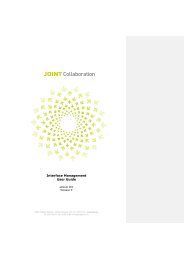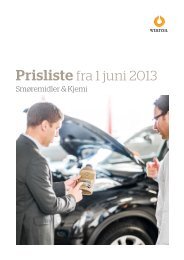Ida Ekblad MarIus Engh anawana haloba lars lauMann - Statoil
Ida Ekblad MarIus Engh anawana haloba lars lauMann - Statoil
Ida Ekblad MarIus Engh anawana haloba lars lauMann - Statoil
You also want an ePaper? Increase the reach of your titles
YUMPU automatically turns print PDFs into web optimized ePapers that Google loves.
censorship in America and Iran. Salinger famously took legal<br />
action to block the showing of this film in New York in 1998.<br />
Other images of State and personal censorship are intercut with<br />
this footage to create a powerful work against the suppression<br />
of literature and art, but the reason this film has such an<br />
affective capacity is due yet again to the many layers Laumann<br />
manages to embed in the work: the exploration of contrasting<br />
views of freedom of expression in East and West, the mythology<br />
of the individualised self and how it came to be represented<br />
in the icon of the “Modernist” author, and what it means when<br />
that author, a man who was one of the first soldiers to enter the<br />
liberated concentration camps at the end of WWII, later chose to<br />
become “formless” and engage in acts of self-censorship.<br />
The sense of self-immolation associated with Islamic culture,<br />
of sacrificing oneself for a cause, also echoes through the Kari<br />
og Knut/Catcher in the Rye metaphor (where is the Salinger<br />
now who would stand at that cliff face and save those fleeing<br />
to its edge?).<br />
We live in an age when cultural icons such as Diana, Morrissey,<br />
Nico, Salinger, and those who live at the extreme edge of<br />
society (the death row prisoner, the woman who loves walls)<br />
have become absorbed into a world of virtuality where their<br />
boundaries dissolve beyond even the fractured identities of<br />
previous cultural epochs. Their stories multiply and transform<br />
amidst this time of saturated communication. Laumann engages<br />
with the problematic of whether a cultural semiotics is even<br />
possible today, pursuing as he does the “fault lines between<br />
[cinema’s] seductive surfaces, through which a multitude of<br />
histories seep” (Lucy Reynolds). The depth and complexity of his<br />
work has even begun to produce its own strange coincidences.<br />
At the end of Berlinmuren we see perhaps the only scene<br />
in which Laumann disassembles the image completely: we<br />
perceive a formless mass of colour gradually taking shape as<br />
we hear Riita talk about the horror of seeing her husband, the<br />
wall, being torn down. For her this is the ultimate of forms<br />
being disassembled. A figure begins to emerge from the mass<br />
of colour – could it possibly be…? Yes, it’s The Hoff – David<br />
Hasselhoff dancing in his 1980s leather jacket singing on the<br />
wall for the freedom of East Germany.<br />
The film Top Secret (used by Laumann in Swedish bookstore)<br />
is a 1984 spoof in which Val Kilmer plays an American teen rock<br />
idol intent on entertaining teenagers behind the Iron Curtain in<br />
East Germany. Surely this coincidence presents us with the most<br />
ludicrous cultural icon of our age, as we descend from Morrissey<br />
and Nico to the “Hoff”. Is this what the fall of the wall really<br />
meant? The “X-factorisation” of culture for us all? We can at<br />
least gain some comfort in the fact that artists such as Laumann,<br />
with his profound engagement with literature, the history of<br />
cinema and art, are making work to counter such calamities.<br />
KatheRine waugh<br />
141

















